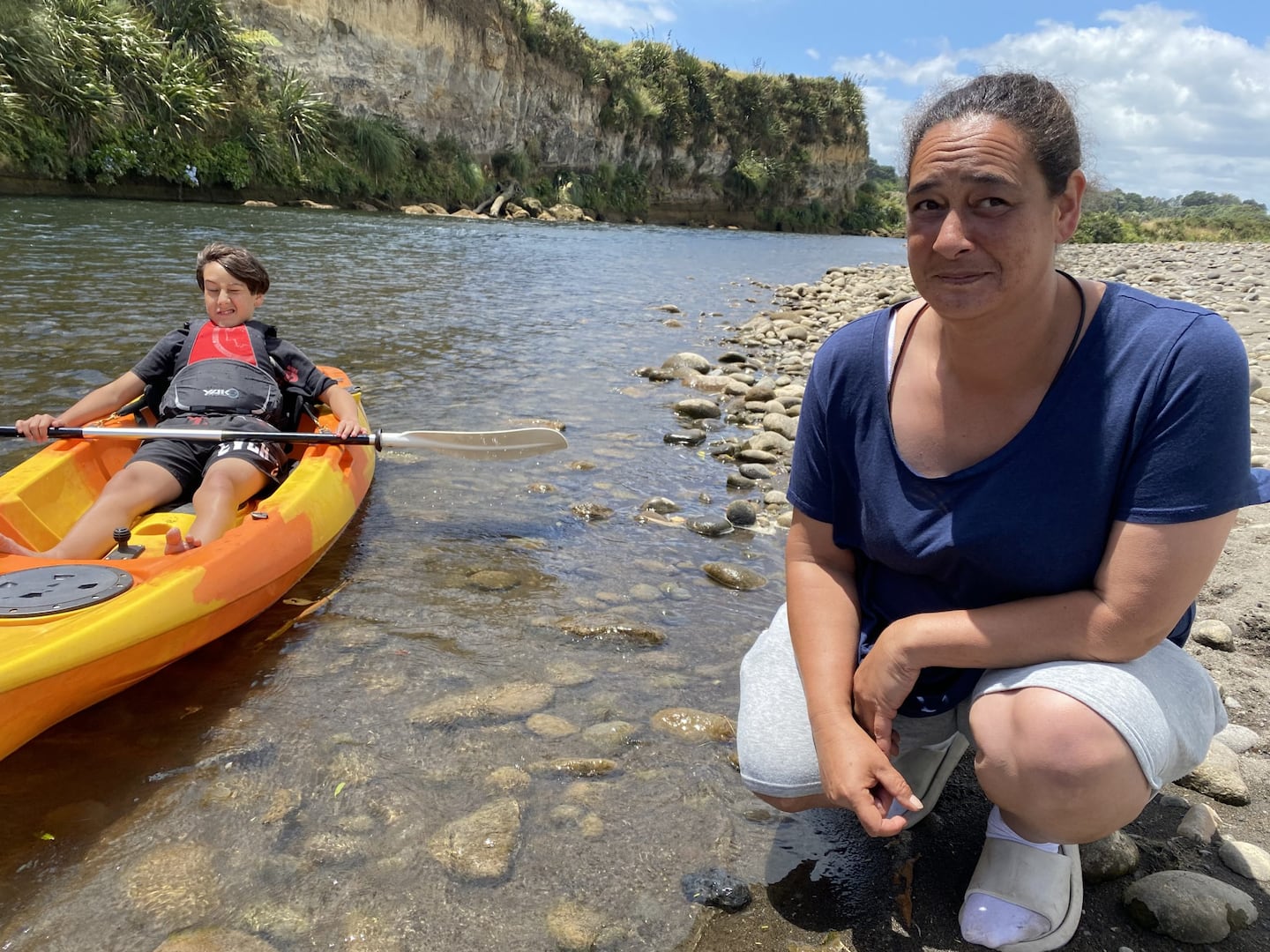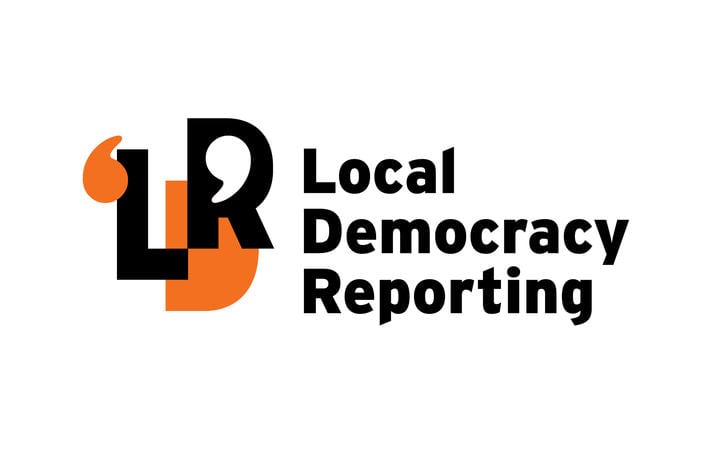A small warning sign pinned low on a parking barrier wasn’t enough to stop a whānau swimming in – and swallowing water from – a river that had been polluted by sewage from a New Plymouth shopping centre.
New Plymouth District Council says its warning signs matched the risk – yet it changed a crucial alert sign from green to red after Local Democracy Reporting raised concerns.
A private sewer line at the Valley Shopping Centre blocked by fat from a food outlet first overflowed for two hours on Saturday morning, sending human waste via a stormwater drain into the nearby river.
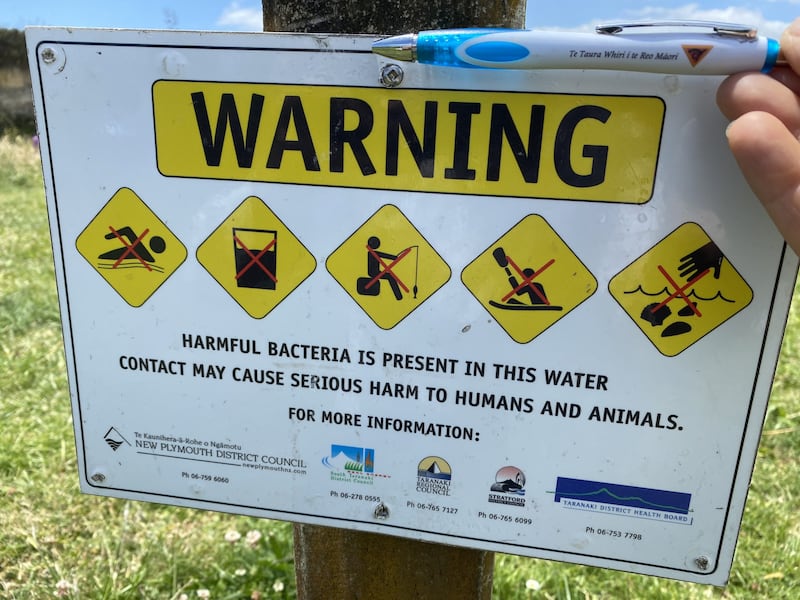
On Monday the council issued a second alert about an ongoing spill from the sewer.
Council advisories said both spills had “potential to affect public health”.
“Warning signs against swimming (48 hours) and collecting kai (28 days) have been erected at affected water bodies.”
The temporary spill warning sign at Te Rewa Rewa bridge carpark was the length of two ballpoint pens, pinned at about knee-height to one of 30 short posts bordering open ground down to the river.
Arohaina Rangipunga didn’t see the 30 x 20cm sign as she headed to the riverbank with whānau on Tuesday morning.
Paddling his kayak, her son Pango Foster inevitably swallowed water.
“It’s kind of disgusting,” he said.
“They should put big signs out. It’s not good. You know, warn everyone.”
Rangipunga (Parihaka, Ngāruahine, Ngāti Ruanui) said warnings ought to be unavoidable for anyone arriving at the reserve.
“The council should notify people properly, instead of everyone having to search up whether the water is good enough to swim in.”
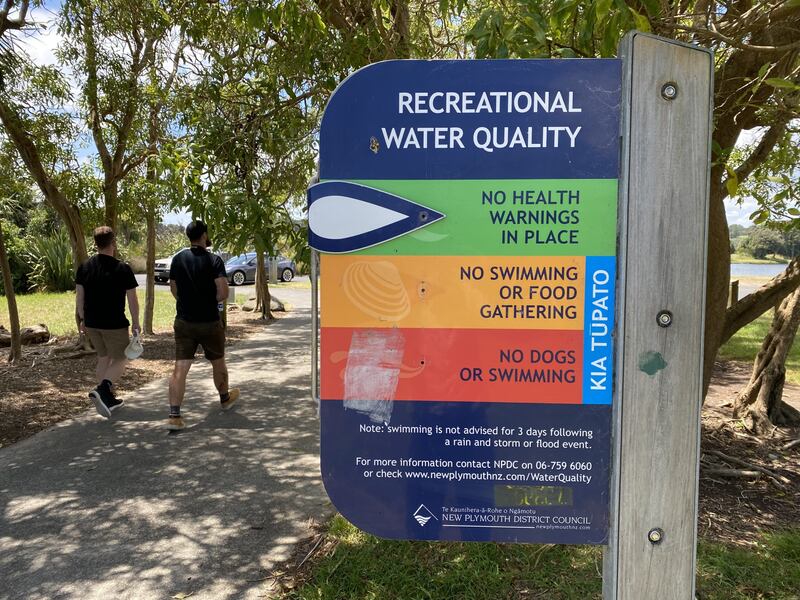
“I don’t even look. I’m just like ‘yep, go’ because [the tamariki] are already going anyway.”
Two large signs on the road in to the council reserve were set to green, indicating water nearby was clean enough to swim in and eat from.
Ten times bigger than the temporary warning sign – a metre high by over half a metre wide – these permanent signs have movable arrows at eye level pointing to green, amber or red alerts about the water.
When Rangipunga parked near the tourist drawcard Te Rewa Rewa walkway bridge on Tuesday the arrow on the big sign pointed to green.

That arrow was changed from green to red alert after NPDC three waters manager Mark Hall went there to check out concerns raised by LDR on Wednesday afternoon.
Hall didn’t mention raising the alert level during a half-hour briefing and interview the next morning.
At the Waiwhakaiho River’s mouth, the arrow there had already indicated red alert – no swimming or shellfish collecting - but that’s more than half-a-kilometre on from Rangipunga’s parking spot.
The river-mouth sign doesn’t mention fishing, but Hall said no food should be taken from there.
And as LDR investigated the area, two children were being taught to fish at the contaminated Waiwhakaiho River mouth, where all seafood is currently considered unsafe.
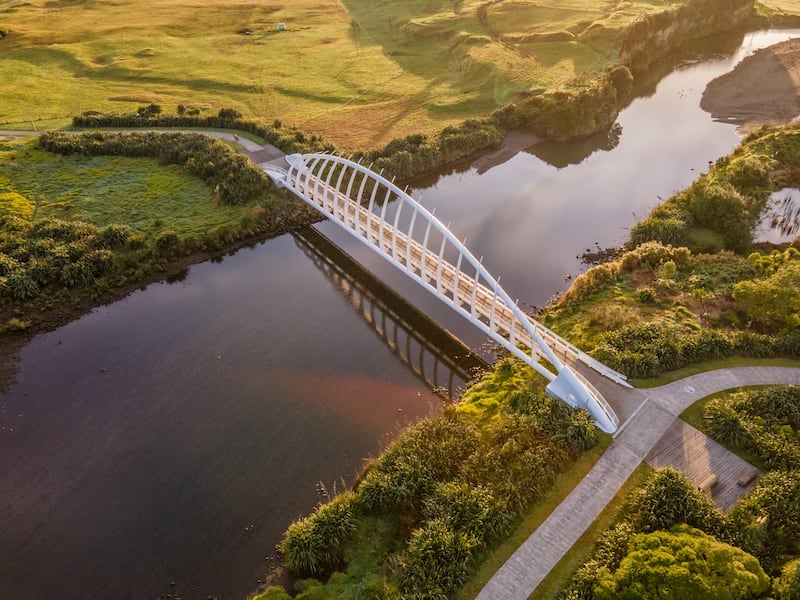
The children were having rods baited by a caregiver.
The red alert arrow was easy to miss, between and behind signs about freedom camping and the danger of 1080-poisoned possum carcasses to dogs.
Hall said the swimming whānau was fortunately at much lesser risk as the second spill didn’t reach the river, despite the council advisory.
NPDC workers contained the waste in a stormwater sump before pumping it out for disposal.
The public health engineer said he understood how people might miss the small warning sign, but the public alert rules didn’t need to change.
“I believe we are doing what we can that’s practical, because it’s about being practical, right?”

“It’s simply a balance. We do what we can practically, and commensurate with the risk that’s posed.”
The risk alert system had been created by NPDC along with the regional council, public health authorities, and iwi and hapū.
Public health staff checked on serious spills and could call for council to post more warnings.
“In a situation like this, the risk is very low.”
Hall said the spill was small.
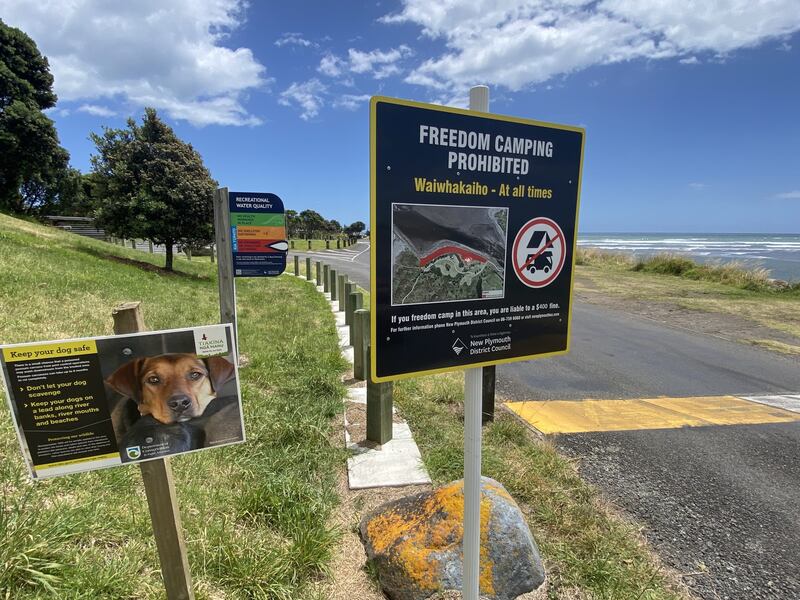
“And it’s going into a river, which is very, very, very wide, which is then going to an ocean.
“The probability of someone happening to swallow that [contaminated] piece of water that happened to be there at the time is very, very, very, very low.”
But he said one overflow is too many.
“It’s still a sensitive thing. A little bit of sewage is still too much.”
Hall said no one should pour fat down a drain.
“The sewage system is not a rubbish disposal system... Pees, poohs and paper only.”
Last January a brief rainstorm overwhelmed New Plymouth’s sewage treatment and the outflow of partially untreated waste closed city beaches.
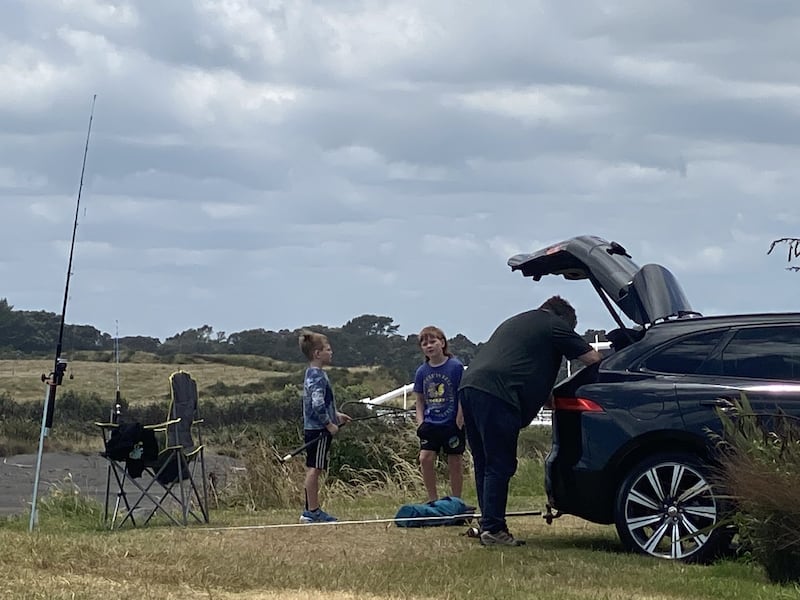
The local representative on water-watchdog Taranaki Regional Council reckoned the risk was low and went surfing with his daughter – without telling her about the pollution.
Councillor and surfer advocate Craig Williamson confirmed the spill signage promised by NPDC was a mirage.
“There’s no signage. People don’t know.”
Over the past eight years New Plymouth suffered an average of 20 sewage spills a year, mostly caused by fat blockages, heavy rain flooding or tree roots.
The current annual count, beginning last July last year, is at six spills - three due to fat blockages, two caused by tree roots and one from a power surge.
LDR is local body journalism co-funded by RNZ and NZ On Air

